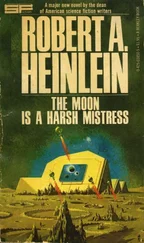Culturally, the new global superpower that had welcomed von Braun and the Operation Paperclip engineers still suffered from a pervasive inferiority complex. The superiority of the European tradition in the arts and sciences went largely unquestioned. To the citizens of a nation still less than two hundred years old, Wernher von Braun personified a cultured, well-mannered, soft-spoken European aristocrat, much like the characters played by Cary Grant, George Sanders, Claude Rains, or Paul Henreid in Hollywood movies. Typical of his upbringing, Von Braun was an accomplished musician who could play the “Moonlight Sonata” from memory. He was perfectly cast for the role he was to play in post-war America.
In Washington, America’s Joint Intelligence Objectives Agency carefully sanitized the troublesome personal histories of von Braun and other Operation Paperclip engineers, much as Hollywood publicists fictionalized the biographies of actors under the studio system. Von Braun arrived in the United States aware that his wartime management experience guaranteed him a position of importance—a position that until very recently had allowed him to be indifferent to the struggles of others or the ethical repercussions of his personal actions. Unlike most of his fellow space visionaries, von Braun was driven less by a personal desire to make a better tomorrow than by a personal ambition to accomplish something that no one had done previously.
Early in his career, von Braun realized that to achieve his goals, he had to become a persuasive salesman. He learned how to convince the key decision makers that his vision would confer to those in power precisely what he had deduced they most desired. To generals and dictators, he offered a promise of military superiority and national prestige; to those worried about threats from outside enemies, he promised security; to those searching for a sense of purpose and meaning, he promised a unique adventure and the fulfillment of our human destiny. Along with his persuasive salesmanship, he cultivated a rare talent to inspire others to do their best and to instill in them a sense of loyalty and dedication that seldom wavered.
It was while quartered with the other German rocket engineers at the Army’s Fort Bliss in El Paso, Texas, that von Braun made a personal choice to become an evangelical Christian. His decision followed a visit to a modest white-framed church situated on a parched Texas lot, where, he later said, he came to realize for the first time that religion wasn’t something inherited like an heirloom but a personal commitment requiring effort and discipline. Von Braun’s conversion may have served to compartmentalize his European past from what lay ahead, as did his decision, at nearly the same time, to wed his eighteen-year-old cousin and bring her to Texas as part of his new life.
THE U.S. ARMY had shipped hundreds of crates containing the components for scores of confiscated German V-2s to the United States. Von Braun and his team restored their mechanisms and successfully launched them from a test range at White Sands, New Mexico, sending some as high as one hundred miles above the Earth. Later flights tried out a two-stage launch vehicle, with a second, smaller research rocket positioned on the nose of the modified V-2. After climbing to a height of twenty miles, the smaller rocket separated from the V-2 and, using its own engine, achieved a velocity greater than five times the speed of sound and ascending nearly two hundred fifty miles above the Earth.
But within the offices of the Pentagon, there was little interest in large rockets like the V-2, as either an offensive or defensive weapon. Its performance during World War II had proven the V-2 more effective as a weapon of psychological terror than destructive power. Von Braun’s work at White Sands had yielded interesting scientific information, but how it might be applied to Defense Department concerns was unclear.
The Cold War had become the dominant concern of those overseeing America’s defense planning, and space research had no role in it. Nevertheless, von Braun tried to think of ways in which he might persuade military decision makers to fund his space-flight research and development. He sought out the physicists at the national laboratory in Los Alamos, New Mexico, who had developed the atomic bomb, with a proposal to marry an atomic warhead with one of his ballistic missiles: the genesis of the intercontinental ballistic missile (ICBM). But in the 1940s it was still assumed that conventional bomber aircraft were the most practical and effective way to deliver a heavy nuclear weapon to a target. Von Braun also outlined plans for a large orbiting military space station, which he argued could serve as a bombing platform capable of targeting any location on the globe and a unique surveillance outpost. It was an idea that he continued to refine and lobby for throughout the 1950s.
But his third and most ambitious idea to stimulate space funding didn’t depend on government defense strategies at all. Recalling how reading science fiction had fired his youthful imagination, von Braun decided to engage a new generation of space dreamers by writing a novel about the first voyage to Mars. Unfortunately for von Braun, the publishers who read the manuscript found his dialogue wooden and faulted the lack of a romantic subplot. When writing his manuscript, von Braun had emphasized the story’s technical accuracy; entertaining his reader was of secondary concern. In all, eighteen American publishing houses rejected it.
Four years after Arthur Clarke and the other officers of the British Interplanetary Society narrowly avoided being killed by the V-2 explosion, Clarke thought it time to exploit the experience to their advantage. He sent a letter to von Braun, offering him an honorary society membership. Von Braun graciously accepted, replying, “Despite the grief the work of me and my associates brought to the British people, [your invitation] is the most encouraging proof that the noble enthusiasm in the future of rocketry is stronger than national sentiments.” An exchange soon followed, in which von Braun sent Clarke some scientific details about the recent White Sands tests and Clarke invited von Braun to deliver a paper at an upcoming British Interplanetary Society conference in London.
In the immediate post-war years, von Braun’s U.S. Army minders kept him on a short leash. It was a time of heightened fear about Soviet spies operating within the United States, and the Army considered him a valuable asset. During his brief return to Germany to get married, the Army had von Braun under constant watch to prevent a Soviet kidnap attempt. But the Army had other worries as well. Von Braun gave a well-received speech to the El Paso Rotary Club in January 1947, but not long after, reports appeared in newspapers that revealed that some Operation Paperclip engineers had to be sent back to Germany after troublesome details about their Nazi past had come to light. Most press accounts stressed the Germans’ eagerness to work for the United States—their anti-communist sympathies were often cited—and indicated their hope to become American citizens. Nevertheless, the same month that von Braun addressed the El Paso Rotary, the president of the American and World Federations for Polish Jews said, “It is a sad reflection and insult to the consciousness of humanity [to welcome] these evil representatives of Nazi science … to this country with open arms.” For the next two years, von Braun maintained a modest public profile.
After the Germans had concluded their work with the refurbished V-2s at White Sands, the Army had few new projects to keep them occupied. There was scant military funding for additional rocket research, and their quarters at Fort Bliss were needed to house the Cold War’s growing roster of soldiers. The Army had to find a new permanent home for its restless and underutilized rocket specialists. In 1950, at the urging of Senator John Sparkman of Alabama, the Department of Defense moved the Army’s Rocket Branch of the Ordnance Department’s Research and Development Division to the recently shuttered Redstone Arsenal in Huntsville, Alabama. It was here, near the Tennessee River, that the Fort Bliss rocket men relocated to buildings constructed a decade earlier for the manufacture and storage of chemical weapons and munitions. New signs announced the facility as the Army’s Ordnance Guided Missile Center. The thirty-five-thousand-acre site on which Redstone Arsenal had been built had already witnessed a great deal of history.
Читать дальше












